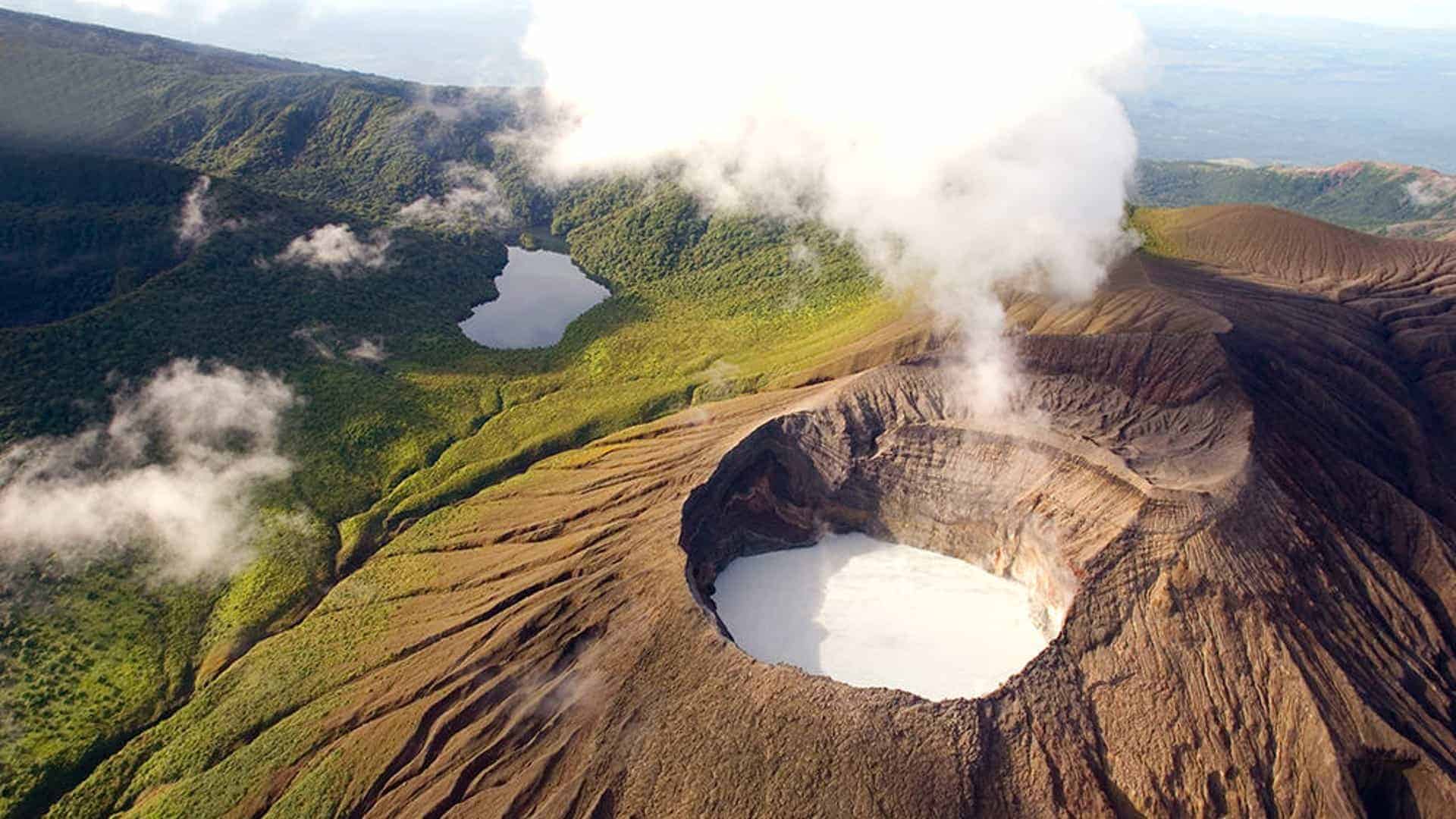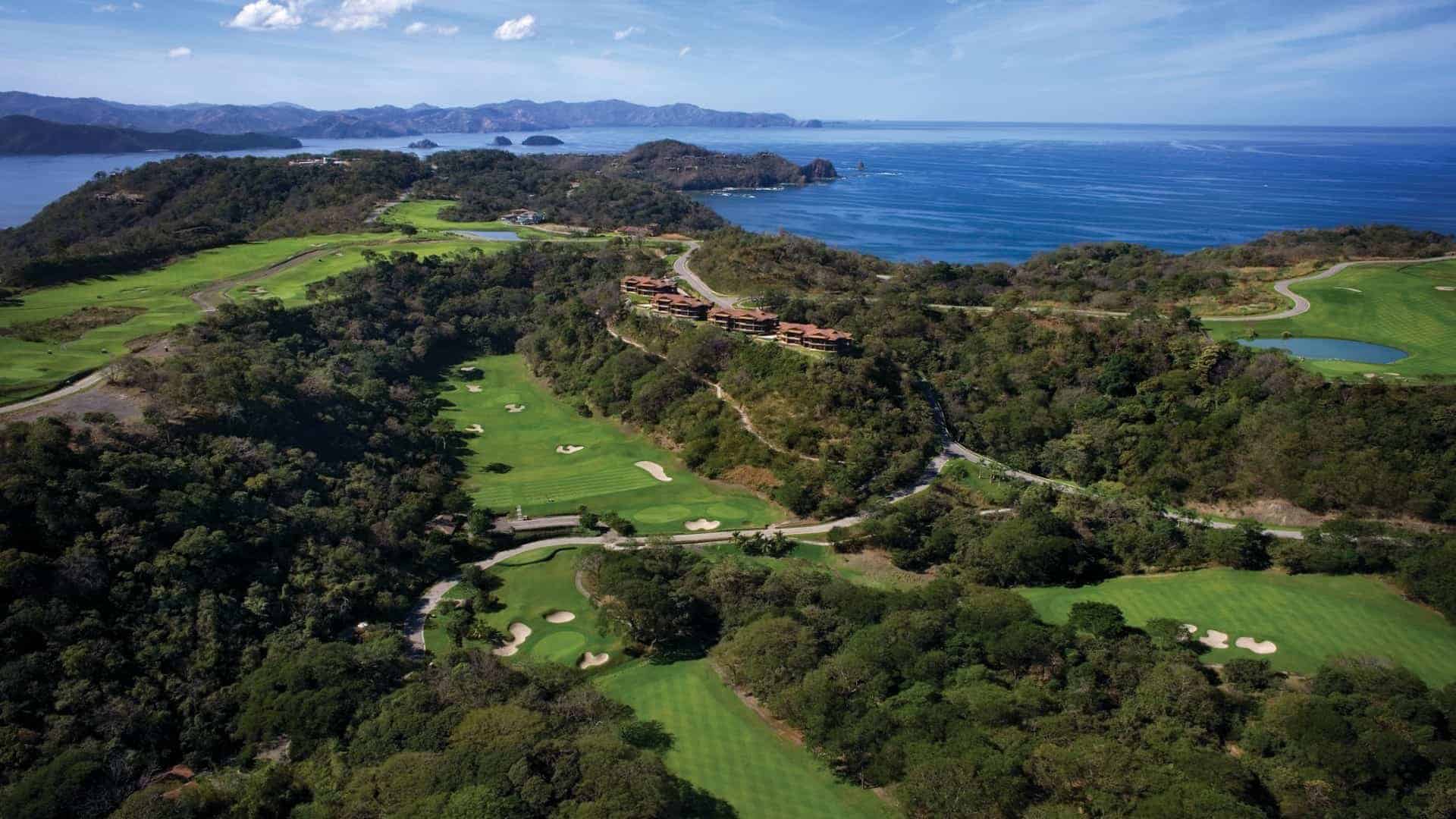Table of contents
When you dive under the sea off the coast of Costa Rica — you’ll find much, much more than tropical fish and other fish species. Tons of marine animals call the waters of Costa Rica home, including ferocious sharks, playful dolphins, endangered sea turtles, and majestic rays.
Read below to discover all the most interesting marine life in Costa Rica you can find on boat rides, snorkeling tours, diving excursions, and other adventures under the sea!
Find These Marine Animals Beneath the Ocean’s Surface in Costa Rica
#1
Leatherback Sea Turtles
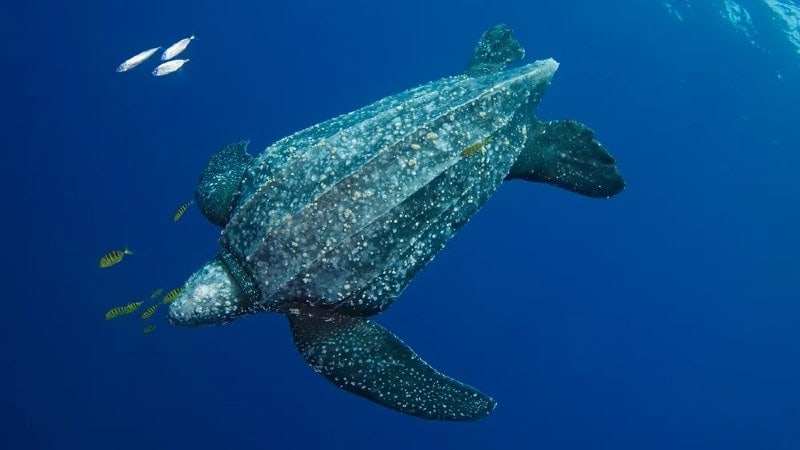
The leatherback sea turtle is the world’s largest sea turtle (these creatures can weigh up to 2,000 pounds!), and it nests on both the Pacific and Caribbean coasts of Costa Rica.
From October to March, you can spot a leatherback sea turtle on Playa Grande in Las Baulas National Park — the most popular spot for leatherback nesting season. Hundreds of leatherback turtles create their nests on Playa Grande each year. During the rainy season, from March to October, leatherback turtles can be spotted in Tortuguero National Park on the Caribbean Coast.
#2
Green Sea Turtles
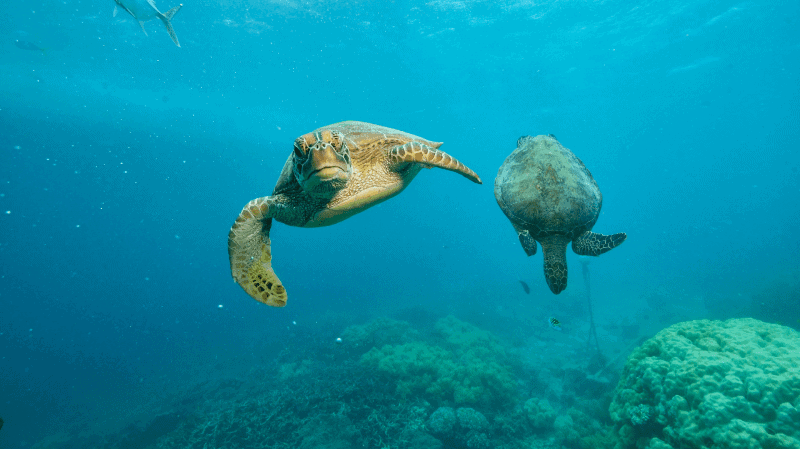
Green sea turtles are found in subtropical waters worldwide, in the Pacific, Atlantic, and Indian Oceans. They get their name from the green skin on their bodies (not their shells) since they eat primarily sea grass and algae. Unlike other sea turtle species, green sea turtles are herbivores.
Looking for green sea turtles in Costa Rica? Well, you’re in luck! During the peak of the rainy season, you can head to Tortuguero National Park. This famous park on Costa Rica’s Caribbean side is the largest nesting site for these majestic marine reptiles in the Western Hemisphere.
#3
Olive Ridley Sea Turtles
Olive ridley sea turtles are the smallest of the world’s sea turtles and get their name from the color of the olive-colored skin on their heads. They live off the coastal waters of nearly 80 countries around the globe, including Costa Rica!
The olive ridley sea turtle is found on the beaches of Playa Ostional (found in Ostional Wildlife Refuge), on Costa Rica’s Central Coast, during the rainy season in Costa Rica, when they spend time on the beaches to nest. You can also see olive ridley turtles in Santa Rosa National Park (on Nancite Beach) during the beginning of the rainy season, from May until October.
#4
Humpback Whales
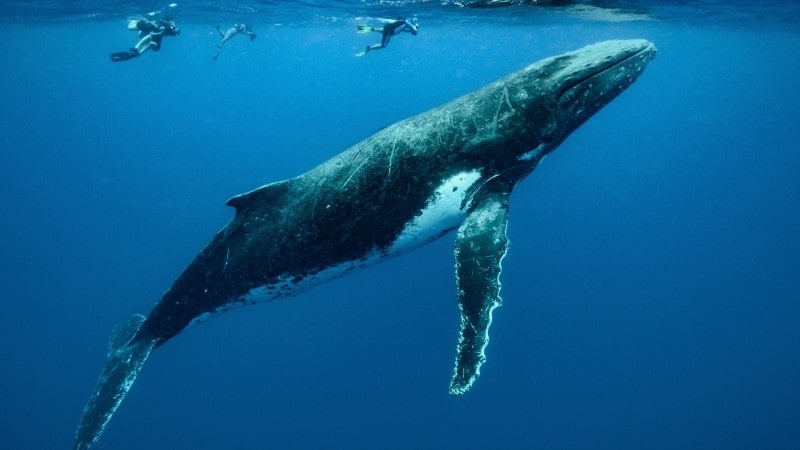
Humpback whales are commonly spotted on Costa Rica’s Pacific Coast. They travel from the Northern Hemisphere to the Southern Hemisphere during the cold winter months and back up the coast as the waters become warmer during the summer. Different species of humpbacks can be seen in Costa Rica, including California Humpback Whales, Antarctic Whales, and North Atlantic St. Lawrence Whales.
A whale-watching tour is generally the best way to see a humpback whale in Costa Rica. They’re most easily spotted along the Southern Pacific Coast, in the Gulf of Papagayo, Marino Ballena National Park, Drake Bay, and Golfo Dulce. Though much less common than humpback whales, pilot whales, orca whales, and blue whales have all been spotted off the coast of Costa Rica. If you’re lucky — you might see one during your trip!
#5
Dolphins
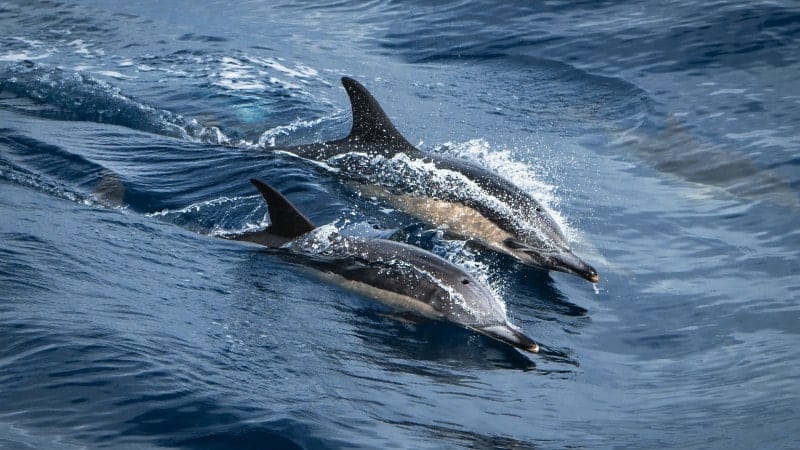
Dolphins are another popular marine animal to spot in Costa Rican waters. Bottlenose, spotted, and common dolphins are all found on the Pacific Coast and Caribbean Coast of Costa Rica. You can generally see dolphins in places like Manuel Antonio National Park, the Nicoya Peninsula, and the Osa Peninsula, as well as all the places where you can find whales in Costa Rica.
Subscribe to our newsletter
to stay up to date
#6
Hammerhead Sharks
Cocos Island, just off the coast of mainland Costa Rica, is a dream diving destination for marine biologists and wildlife enthusiasts who want to encounter rare sea life, like scalloped and great hammerhead sharks. The best time to see hammerhead sharks in the protected wildlife refuge of Cocos Island is during the rainy season.
In addition to hammerhead sharks, Costa Rica’s Cocos Island is one of the best marine ecosystems in the entire world to see large pelagic species, including other sharks, like silver-tip sharks, blacktip sharks, tiger sharks, and nurse sharks, as well as rays, dolphins, and other sea life.
#7
Whale Sharks
A whale shark isn’t technically a whale or a shark — whale sharks are actually the world’s largest fish species. Though it isn’t as common to see a whale shark in Costa Rica as in other Central American countries, like Mexico — whale shark sightings have happened off of Costa Rica’s Pacific Coast. These massive fish can be spotted in the Osa Peninsula during the dry season and have also been spotted in the Catalina Islands, Bat Island, and Gulf of Papagayo.
#8
Bull Sharks
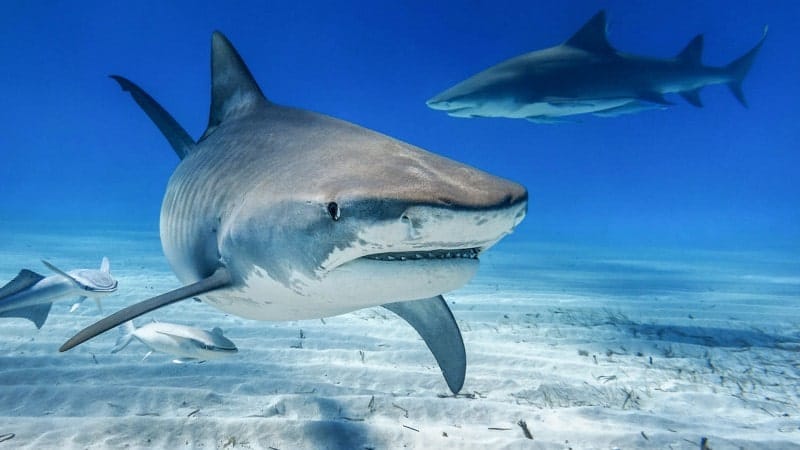
Bull sharks are found in coastal waters around the world and are one of the world’s most dangerous shark species. They can survive for extended periods in freshwater and are often found in rivers and other waterways besides the ocean.
Bull sharks are found in the waters around the Bat Islands, a popular diving site along Costa Rica’s Northern Pacific Coast. The rainy season, from May to November, offers the highest chance of seeing a bull shark at the Bat Islands. In fact, one of the dive sites here has been called “The Big Scare” because of the frequency of bull shark sightings!
#9
Manta Rays
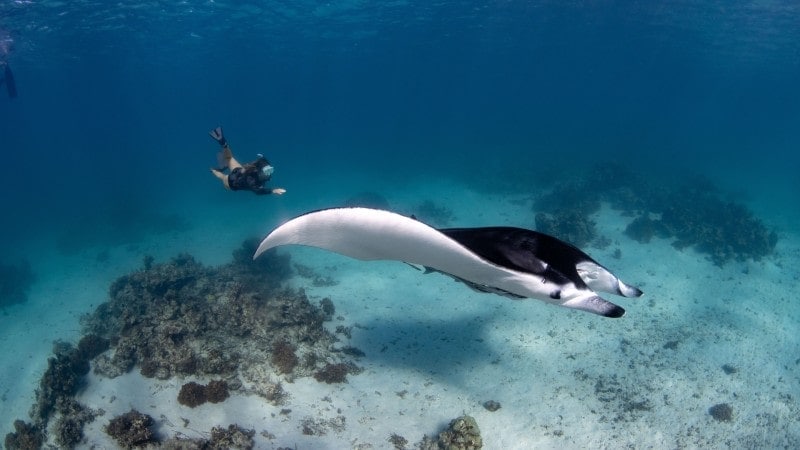
Giant manta rays (manta birostris) are the world’s largest ray species. They have a wingspan that can reach 20 feet and are often between 2,000 – 3,000 pounds. However, despite their formidable size, manta rays are quite gentle and are a welcome surprise for divers in Costa Rica.
Manta rays can be found in the Catalinas Islands, off the coast of popular beach towns like Playa Flamingo and Playas del Coco. They are also found in Caño Island Biological Reserve, Cocos Island, and Manuel Antonio National Park — all on Costa Rica’s Pacific Coast.
#10
Spotted Eagle Rays
The spotted eagle ray is much smaller than the manta ray — usually four feet tall with a three-foot wingspan — and is named for the bright white spots that speckle its dark back. However, spotted eagle rays tend to hang out in shallower waters than manta rays, so you have a greater chance of seeing one while snorkeling in Costa Rica.
Spotted eagle rays can be found in similar spots as manta rays in Playas del Coco, Caño Island Biological Reserve, and Cocos Island.
Encounter Costa Rica Marine Life on a Memorable Vacation with Special Places of Costa Rica
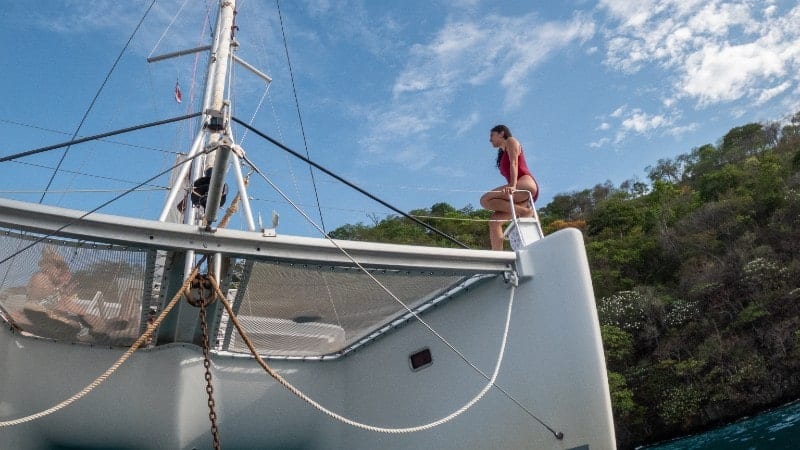
All these marine creatures await on the shores and in the sea of Costa Rica! Explore our vacation rentals from Special Places of Costa Rica to find the perfect place to stay. Our rentals will provide an excellent launching point to encounter many of these marine animals on undersea adventures.
Subscribe to our newsletter
to stay up to date


